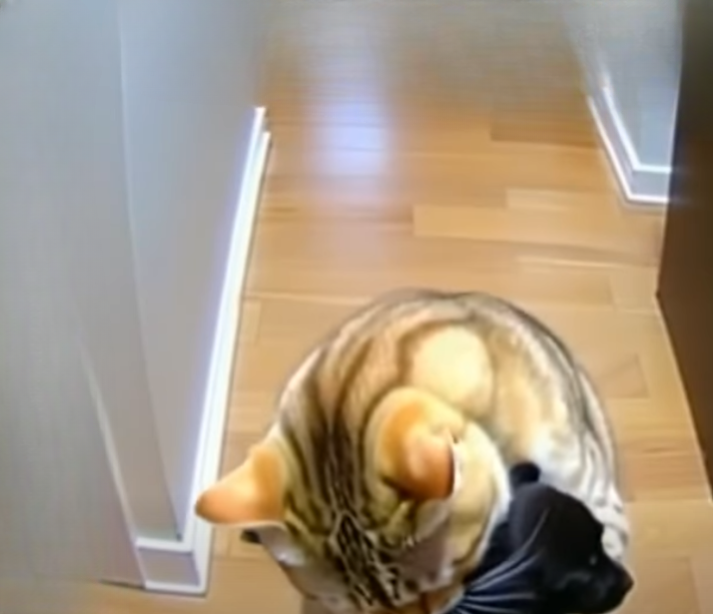
Some memories of childhood beaches shine with golden light—sandcastles, seashells, the salty air. Others linger for entirely different reasons. Among the countless treasures and curiosities scattered along the shoreline, there were always things that seemed mysterious, strange, even eerie. For me, and for many others who grew up near the water, one such mystery was the trumpet worm nest.
At first glance, it didn’t even look alive. Half-buried in the sand, rough to the touch, shaped like some relic from another time, the nest could appear unsettling. As children, we called it “the thing,” daring each other to poke it with sticks before running away in nervous laughter. Though we didn’t know it then, what we stumbled upon was part of a hidden ecosystem, crafted by marine polychaetes that quietly shape coastlines.
The trumpet worm nest was not dangerous, nor was it dramatic. Yet, it shaped our memories—lingering as a small but significant reminder that childhood isn’t only about warmth and sunlight. Sometimes, it’s about the moments of wonder and unease that spark questions we carry long into adulthood.
Childhood Curiosity and Quiet Unease
Not every childhood memory shines softly. Some of them stick precisely because they were different—odd shapes in the sand, shadows under the pier, or the things we didn’t understand. The trumpet worm nest was one of those unforgettable details.
When we were children, we didn’t see a worm’s architecture; we saw something alien. It wasn’t like the seashells or the pretty stones we collected. Instead, it stood out—an object that looked like it belonged to another world. That strangeness, combined with our ignorance, made it both fascinating and frightening.
Children react strongly to the unknown. Sometimes they embrace it with excitement; other times they shrink back in fear. For us, the trumpet worm nest was both. It became a fixture of beach adventures, the centerpiece of dares and stories. Yet beneath the laughter was a deep, lasting impression: the realization that the world was more complicated, more layered, than we thought.
Nature’s Architects: What We Know Now
As adults, our perspective shifts. The odd shape that confused us as children makes sense in the light of science. Trumpet worm nests are constructed by polychaete worms, small segmented creatures that inhabit coastal waters around the world.
These worms are master builders. They gather grains of sand, tiny shell fragments, and bits of debris, cementing them together with natural secretions to form long, sturdy tubes. The tubes, which may poke slightly above the sand, provide safety from predators and a stable home in the shifting tides.
Polychaetes, including trumpet worms, play crucial roles in the marine environment. By burrowing and building, they help oxygenate the sediment and recycle nutrients. Their nests may look like strange artifacts, but they are essential parts of the coastal ecosystem.
What once looked unsettling now reveals itself as an act of survival and engineering—nature’s quiet work unfolding beneath the waves.
The Mystery in the Mundane
The funny thing about childhood memories is how they elevate the ordinary. A trumpet worm nest is, in many ways, just part of the natural landscape. For scientists, it is data. For beachgoers, it is scenery. For children, though, it becomes something else entirely.
Children see in symbols. A rough tube sticking out of the sand might become a fossil, a monster, or a doorway to an underwater world. The trumpet worm nest, though mundane to adults, became extraordinary to us. It was never just a tube; it was an enigma.
Looking back, this transformation of the ordinary into the mysterious is what made those memories stick. Childhood has a way of layering imagination onto reality, giving even the simplest things depth and drama.
How to Recognize a Trumpet Worm Nest
For those curious enough to search for one, trumpet worm nests are easier to identify once you know what to look for:
- Shape: Long and tube-like, sometimes curved, extending slightly above the sand or attached to rocks.
- Texture: Rough and grainy, made up of sand grains and broken shell fragments glued together.
- Color: Usually beige, brown, or gray, blending naturally with the surrounding shoreline.
- Openings: Small holes at each end, marking the entrances through which the worm extends to filter food or interact with its environment.
The nests may not catch your eye immediately. But once you notice them, you begin to see them everywhere—small signs of life hidden just beneath the surface.
To Touch or Not to Touch?
As children, we poked and prodded. Curiosity often outweighs caution when you’re young. But as adults, we learn better. Trumpet worm nests, while sturdy to the eye, are fragile structures that house living creatures. Breaking one is not just destroying an object; it is displacing a tiny life form with an important role in its ecosystem.
The best way to appreciate them is without interference. Admire them, photograph them, sketch them, or tell their story—but let them be. The more we understand about marine ecosystems, the more we realize that even the smallest organisms play a role in sustaining coastal environments.
Lessons in Childhood Fear and Wonder
The trumpet worm nest is not frightening in itself. Yet the memory of it carried a subtle weight. It was unfamiliar, a little eerie, and therefore unforgettable. That is the beauty of encounters with the unknown: they leave marks on the imagination.
For many children, moments like these plant the seeds of curiosity. The weird thing in the sand becomes the question that pushes someone toward biology, marine science, or simply a lifelong love of nature. Fear, it turns out, can be the beginning of fascination.
These encounters taught us that the world is not entirely predictable. It holds secrets, oddities, and mysteries. That lesson is as important in adulthood as it is in childhood: to stay open to wonder, to let curiosity outweigh discomfort, and to acknowledge that strangeness often hides importance.
Revisiting with Adult Eyes
Years later, revisiting the beach as adults, we see trumpet worm nests differently. We recognize them not as threats but as signs of a healthy ecosystem. We can explain them in scientific terms. Yet the feeling of childhood unease lingers faintly, a reminder of how they once loomed large in our imagination.
This duality—scientific knowledge paired with emotional memory—makes them special. They remind us that understanding the world does not erase its mystery. If anything, it deepens it. Knowing what trumpet worms are does not make them less remarkable; it makes them more so.
The Wider Context: Why These Memories Matter
Stories of trumpet worm nests are not just about biology or childhood nostalgia. They are about the relationship between people and place. Beaches are not simply recreational spaces; they are classrooms, stages, and storybooks. Every shell, stone, and nest has the potential to shape how we see the world.
The memory of being unsettled by a worm’s home is not trivial. It reflects the larger truth that nature is complex, sometimes strange, and always worthy of respect. In an age when children spend more time indoors and in digital spaces, these tactile, emotional encounters with nature matter more than ever. They remind us of the importance of unstructured exploration, where a simple walk on the beach can ignite a lifetime of curiosity.
The Ghosts in the Sand
When we called them “ghosts in the sand,” we were not entirely wrong. Trumpet worm nests are relics of creatures most of us never see. They rise and crumble with the tides, appearing briefly before vanishing into the shifting shore.
Like ghosts, they leave impressions—sometimes eerie, sometimes awe-inspiring. They remind us that countless lives unfold beneath our feet, unnoticed but vital. They are echoes of unseen worlds, quiet markers of life’s persistence at the edges of land and sea.
Final Reflections: Small Things, Lasting Lessons
Looking back, trumpet worm nests were more than strange beach finds. They were teachers. They showed us that beauty is not always obvious, that learning can emerge from discomfort, and that the natural world is full of stories waiting to be noticed.
The nests still stand in memory as eerie yet enchanting objects. They carried weight in childhood, and they continue to carry meaning now. They whisper that not everything is meant to be understood immediately—that sometimes, the deepest lessons come from pausing, wondering, and respecting the unknown.
So here’s to the ghosts in the sand, to the mysteries that unsettled us, and to the children we once were who dared to wonder.




